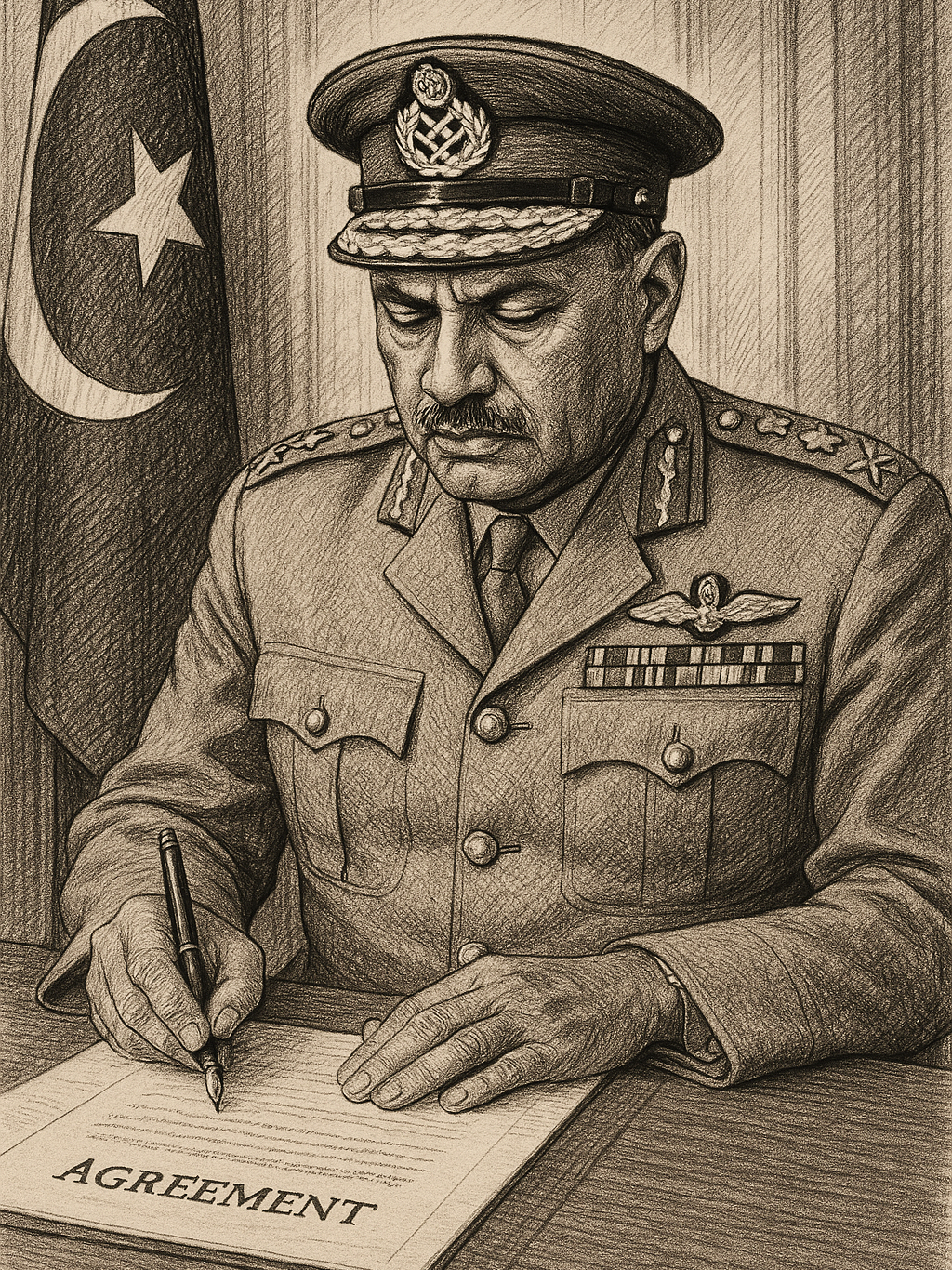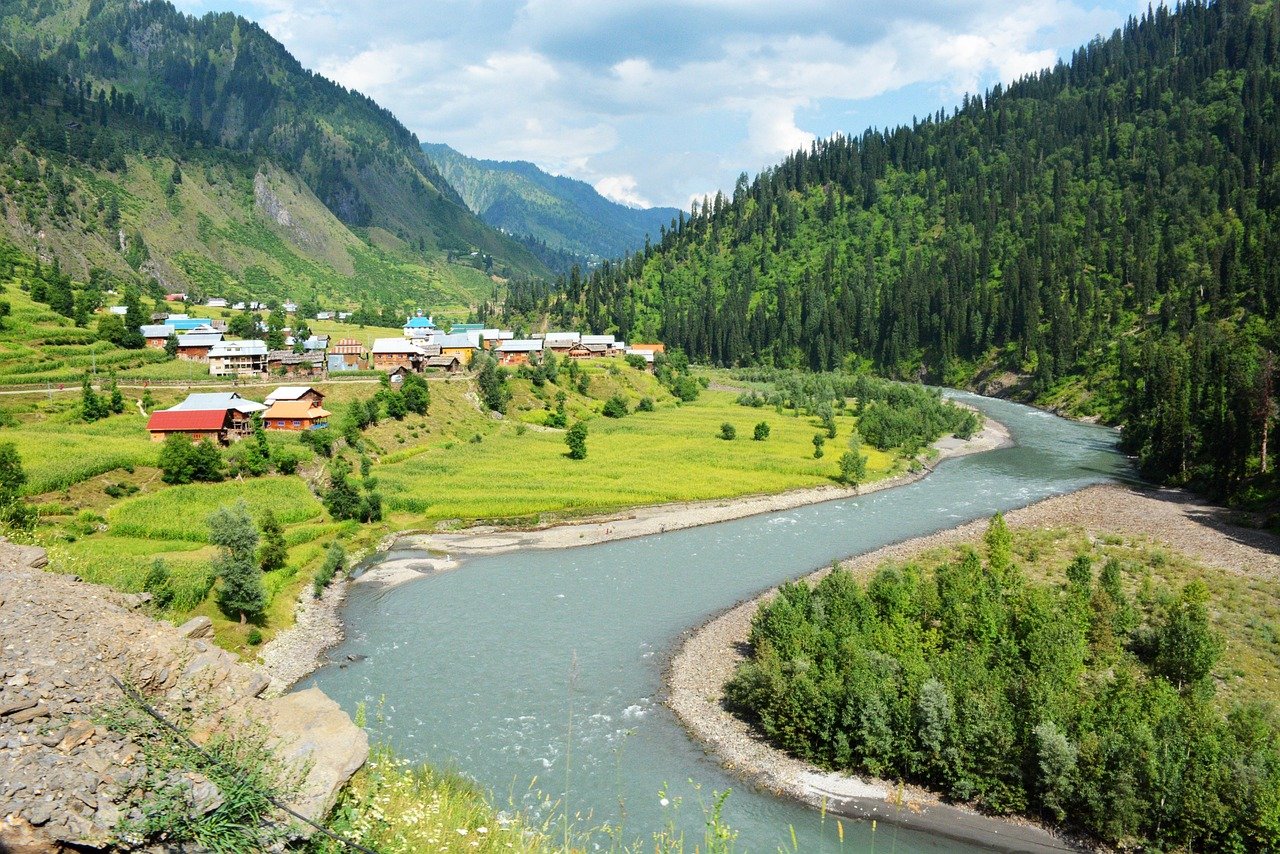This treaty was signed by coordination and negotiated by the World Bank with the consent of both countries. The treaty reserved the rights of both countries regarding the distribution of water in the Indus River System. As per the treaty distribution, three rivers, Jhelum, Indus, and Chenab, were part of Pakistan, and the other three (i.e., Beas, Sutlej, and Ravi) were part of India. Water of the Indus River flows from Glaciers of the Tibet region (China) from the foothills of mountain ranges, i.e Himalayas, the Hindu Kush, and the Karakoram, and the river also crossing from Indian controlled Kashmir, through KPK, Punjab, Sindh province, and finally drops down in the Arabian Sea.
Sindh. Water from five rivers, Jhelum, Chenab, Ravi, Beas, and Sutlej, joins with the Indus River at Punjnad. The Indus River currently irrigates the whole of Pakistan, and no other source is present; The Indus River is the lifeline of Pakistan. India and Pakistan are dependent on a modern irrigation system, which was constructed by the Indian East Company during British rule.
Violation of Customary Laws – Water Distribution
After the partition of India and Pakistan in 1947, the Water of the Indus River was divided and canals flowed through India and Pakistan for a short-term agreement. On April 19, 1948, India stopped supplying downstream water (Pakistan). Mater was solved through interdominion accord on May 4, 1948, but it is not a permanent solution. Furthermore, negotiations were conducted, but neither country was willing to compromise the distribution of water. Representatives of the Tennessee Valley Authority and the US Atomic Energy Commission visited and suggested that both countries jointly sign an agreement for the distribution of Indus River Water. Resulting after continuing six years effortrts with arbitration and funding from the World Bank. The agreement formed between India (PM Jawaharlal Nehru) and Pakistan (President, Gen Muhammad Ayub Khan) and signed is the Indus Water Treaty of 1960.

The treaty gives Pakistan the right to use the water of western rivers (i.e., Indus, Jhelum, and Chenab) and other eastern rivers (i.e., Ravi, Beas, & Sutlej) to India.
In this way, a permanent salutation of the distribution of the Indus Water System was finalized, and the water issues were closed and peacefully settled.
Construction of Dams, Barrages, Link Canals, and Tube Wells
With funding from the World Bank and other member countries, Tarbela Dam was constructed on the Indus River, and Mangla Dam on the Jhelum River.
Violation of the Indus River Treaty
In 2017, India built the Kishanganga Dam and Ratle Hydroelectric Power Station on the Chenab River in Pakistan. Pakistan approached the World Bank water commission, and illegal construction of the Dam and Power station, according to the treaty, caused a reduction in water flow. Pakistan claimed that these projects reduce the flow of water, as 80% of agriculture depends on Indus water. Pakistan complained, but the World Bank failed to agree to both countries.
In 2022, on the request of India, a neutral expert was appointed, and Pakistan requested that the court of arbitration settle this water issue.
In 2023, once again, the matter was highlighted; India requested bilateral modification in the Treaty of Indus River for their interest, but Pakistan refused.
In 2024, India wanted to modify the treaty with the help of the Indus Commission and discuss it with Pakistan for their interest because of irrigation, drinking, and climate change issues. Previously, Pakistani officials were also informed that India would not intervene or reduce the flow of water, which would act as a water crime.
Terrorism and Suspension of the Treaty
In 2025, by the recent terrorist attack at place of Pahalgam in Indian occupied Kashmir on Tuesday, 22 April 2025, the Indian Govt accused that this recent cross-border terrorism was backed by Pakistan, however, Islamabad denies the baseless allegation. The TRF armed group takes responsibility for this attack in Kashmir and demands the independence of Kashmir.



